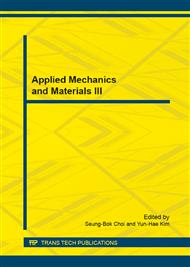p.252
p.259
p.266
p.271
p.279
p.285
p.290
p.299
p.309
Research on the Law of Propagation and Attenuation of the Explosive Stress Wave in Surrounding Rocks at Different Levels
Abstract:
By using nonlinear finite element analysis software-ANSYS/LS-DYNA, a numerical model was carried out to simulate the explosive stress wave generated from a single-hole coupling continuous charge blasting which varies with time at different levels of rock. Meanwhile, the propagation and attenuation law of the explosive stress wave at different rock levels was analyzed to gain an in-depth knowledge of rock explosion. The result shows that the explosive stress wave in rock is in the trend of exponential decay and presents three forms: shock wave, stess wave and seismic wave. It illustrates that numerical simulation can objectively reflect the failure law of rock blasting and provide theoretical and technical guidance for the corresponding practical engineering.
Info:
Periodical:
Pages:
279-284
Citation:
Online since:
January 2015
Authors:
Price:
Сopyright:
© 2015 Trans Tech Publications Ltd. All Rights Reserved
Share:
Citation:


